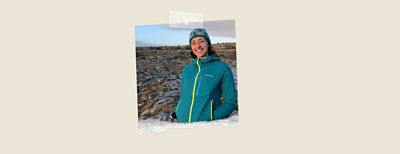A blister or a cut at home is annoying; the same thing 20 miles deep in the backcountry becomes much more serious. Without easy access to a doctor or a drugstore, you’re on your own in the wilderness—so it’s crucial to pack a well-stocked first-aid kit to deal with pain, wounds, and injuries. But you don’t need to carry an entire medicine cabinet’s worth of supplies. The list below should cover the essentials for most hiking and backpacking trips.
Before getting to the details, though, ask yourself one key question: Do I want to make my own first-aid kit or buy one? Ready-made kits are an easy, quick solution; contain small, light and compact, individually wrapped items; and often come in a compact carrying case. On the other hand, assembling your own first-aid kit means you can customize it to your needs, carrying exactly what you want, and nothing you don’t. Keep it light and packable by taking only individual bandages and similar items (not the whole box), and choosing either small bottles of medication or repacking a handful of pills and the bottle label in a zip-top bag.
First-Aid Kit Essentials
The items on this list should handle the most common backcountry maladies for one or two people on a two- to three-day trip. Quantities are approximate: Ultralighters might want to take less, while parents who want to be prepared for everything might want more.
Wound treatment
- Blister treatment (duct tape, moleskin, blister tape, or other treatment of choice): for soothing hot spots and blisters
- 4-6 bandages in assorted sizes: for dressing small bleeding wounds (fabric ones stay on longer than plastic)
- 1 small roll gauze: for dressing larger bleeding wounds
- 1 small roll medical tape: for affixing gauze to a wound
- 4-6 wound closure strips/butterfly bandages: for flesh wounds that gape open a bit
- 1 mini syringe: for irrigating a wound before dressing it
- 3-5 antimicrobial wipes: for cleaning hands and around a wound
- 2-4 packets antibiotic ointment: for covering a wound before dressing it
- 1 mini scissors: for cutting moleskin and bandages
- 1 pair medical gloves: to protect you from someone else’s blood
Medication
- 4-6 tablets ibuprofen: for pain, headaches, and fever
- 2-4 tablets antihistamine: for swelling and allergic reactions
- 2-4 tablets antidiarrheals: to get you out of the woods and to a bathroom
Sprains & strains
- 1 roll Ace bandage: for wrapping injuries to add support and limit mobility
- 1 bandanna: for making a simple splint
Other
- 1 tweezer: for removing splinters and ticks
- 2 safety pins: for securing bandages or popping blisters (sterilize first!)
More considerations
Traveling with a larger group, and/or for a longer time? Take what’s listed above, just a bit more of it. Split up supplies so that one person doesn’t have to carry all of it, or keep it together and have the first-aid kit carrier take less of the other group gear.
Some people might want or need to add extra items to the list, such as bug bite treatment, an Epi(nephrine) pen for severe allergic reactions, various splints, or a mini first-aid book. You can, of course, pack these even if you go with a ready-made kit.




